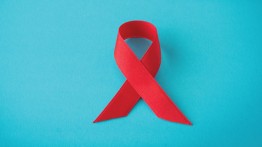COOPERMADE: Combatting the AIDS Crisis

In 1986, Ron Brookmeyer Math'75 deployed his expertise in statistics to dramatically demonstrate the urgency of the AIDS crisis. Brookmeyer, who is currently dean of UCLA’s Fielding School of Public Health and researches the growing Alzheimer’s epidemic, developed new means for tracking rates of HIV infection in the world, methods described in the book he co-wrote AIDS Epidemiology: A Quantitative Approach (1994). (Those methods are now used by the Centers for Disease Control and the World Health Organization.) His work dramatically demonstrated the extent of the crisis and underscored the dire need for research and public health interventions.
That’s where the work of public health advocates like Kenneth Bridbord CHE'64 proved to be critical in slowing the disease’s spread. He found that the problem-solving skills he learned as an undergraduate at Cooper underpinned his later career leading critical initiatives to treat HIV and AIDS in places around the world. Bridbord, who earned an MD from the University of Chicago and a Master’s of Public Health from Harvard in 1971, first applied his expertise to the health risks imposed by lead in the environment. His work for the Environmental Protection Agency shed light on the metal’s deleterious effects on health, and he helped draft the initial text for the federal regulations that required removal of lead from gasoline. Then when the AIDS crisis hit in the 1980s, he began working for the Fogarty International Center where for 35 years he led the group’s extramural programs. These were initially a scant group of research fellowships, but Bridbord transformed them into a wide network of projects focusing on medical training and research for low- and middle-income countries combatting AIDS among other diseases.
Bridbord’s work earned him an NIH World World AIDS Day Award in 2007; Brookmeyer was the recipient of the American Statistical Association’s Nathan Mantel Lifetime Achievement Award for contributions at the intersection of statistical science and epidemiology and the Karl E. Peace Award for outstanding statistical contributions for the betterment of society. More importantly, their commitment and hard work, combined with ingenious strategies for influencing public health, saved countless lives.





